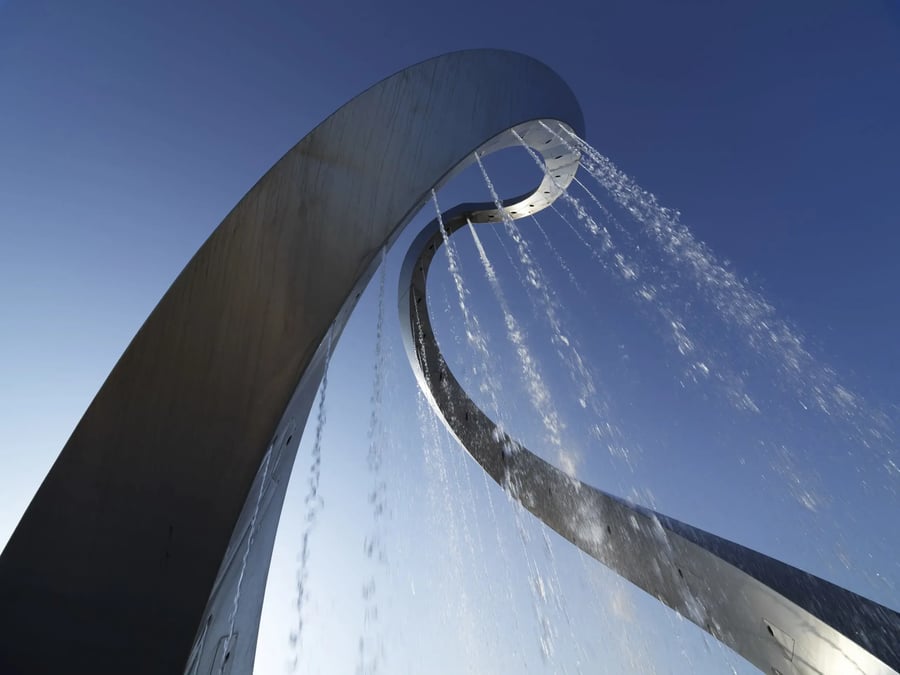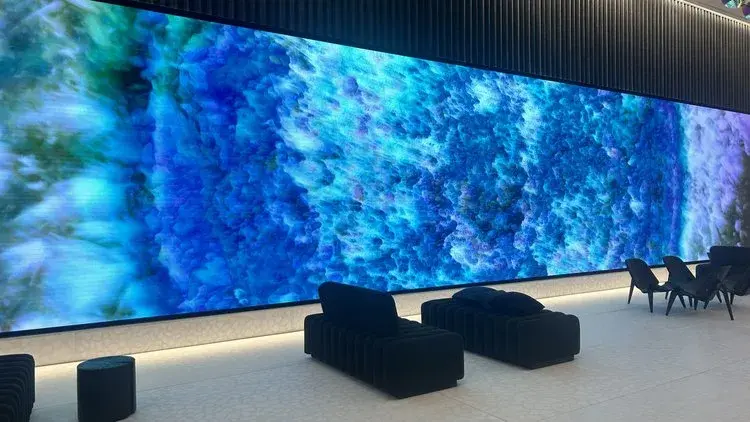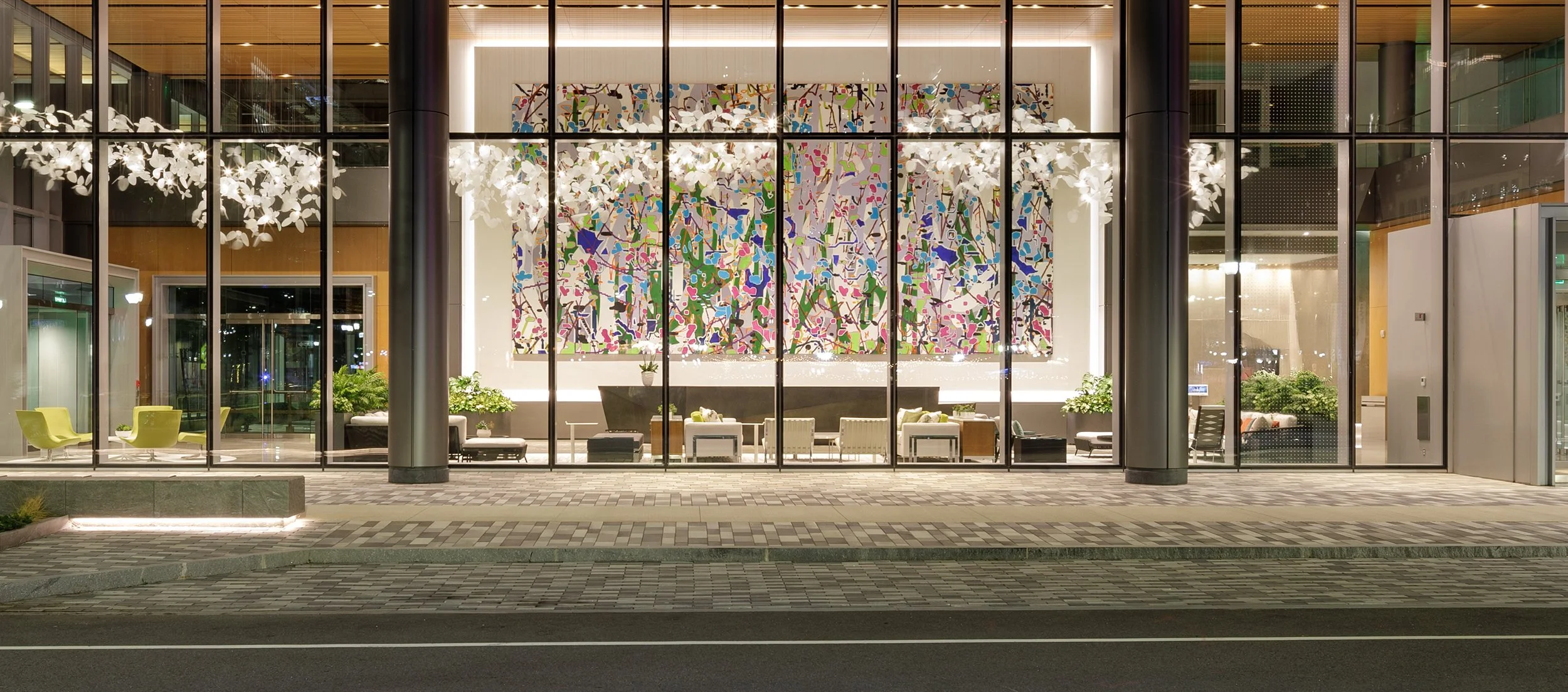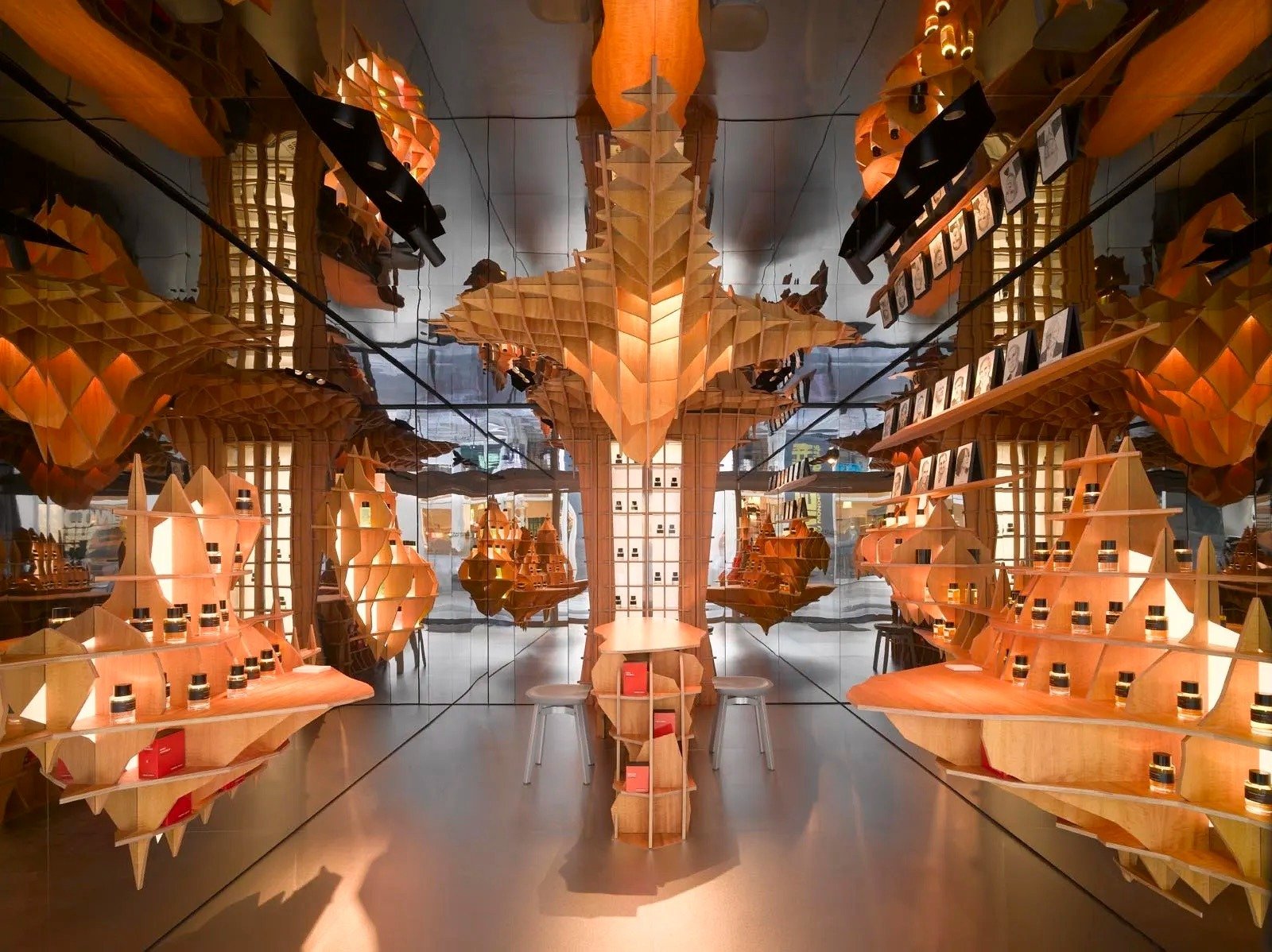The Art of Layering: Building Meaning Through Material and Metaphor
Artists frequently employ layering as a fundamental technique to build depth and
resonance in their work. This practice can manifest materially, such as a sculptor
combining various materials to create a composite form, or layering images for
complexity. Beyond the physical, artists also strategically layer meaning, weaving
together multiple symbols, historical references, and emotional subtexts. This layering
of conceptual content allows the artwork to function on several levels simultaneously,
inviting viewers to peel back the surface to reveal deeper narratives.
Parable | Cliff Garten
In Parable, artist Cliff Garten explores how material, light, and story can intersect. The
stainless-steel sculpture, with its fluid, interwoven ribbons, captures and reflects light in
ever-changing ways. Garten’s process—combining digital precision with the craft of
metalwork—mirrors the conceptual layering in the piece’s title: a parable is both a story
and a lesson, inviting interpretation. As sunlight moves across the sculpture, it seems to
unfold new meanings, encouraging viewers to reflect on how understanding itself is built
layer by layer.
Blue Bonnet | SOFTlab
Bluebonnet, by SOFTlab in collaboration with CRAFT Engineering Studio, turns the
Texas state flower into a luminous experience of color and form. Created with panels of
dichroic glass, the sculpture shifts with the movement of the sun, scattering prismatic
light that changes from morning to evening. The layering here is both physical and
atmospheric—glass, light, and shadow overlap to create an artwork that’s alive with
motion. Beyond its technical beauty, Bluebonnet celebrates identity and place,
transforming a familiar natural symbol into something at once grounded and ethereal.
Tunnel Vision | Freeland Buck
In Tunnel Vision, by Freeland Buck and commissioned by the WMATA Art in Transit
Program, layering takes on an immersive dimension. A layered cone 10 feet high and
14 feet in diameter suspended 10 feet above the floor, the artwork is both an iconic
object and an immersive environment. Light, reflection, and pattern transform an
everyday transit tunnel into a vibrant, shifting environment. The work responds to the
rhythm of city life, and in doing so, reminds us that urban experiences themselves are
layered—public and private, fast and reflective, fleeting yet shared.
Sam Adams Beer Garden | Stephen Sheffield
Stephen Sheffield’s Sam Adams Beer Garden, Boston brings conceptual layering into
the realm of photography. Sheffield blends images of Boston’s industrial past with the
social energy of its present, combining collage, montage, and memory. The result feels
both documentary and dreamlike—a visual conversation between history and
celebration, work and play. Through this layering, Sheffield captures how cities evolve,
carrying their pasts within their present-day lives.
Blossom | FYOG
Finally, Blossom by FYOOG transforms metal into something unexpectedly delicate. Golden aluminum hexagons cluster into a radiant suspended sculpture that evokes both natural growth and technological design. The golden tones glow warmly in daylight and shimmer under artificial illumination, creating a surface that seems to change with each moment. Seen from afar, the canopy reads as a luminous bloom. Up close, the precision of each hexagonal unit and its layered arrangement becomes clear. By merging architectural scale, refined geometry, and
resilient engineering, Blossom transforms this D.C. highrise entryway into an inspiring passage.
Across these five projects, layering becomes more than a technique—it’s a way of
thinking. Each artist uses material and conceptual buildup to reflect the complexity of
the world around us. Through layering, art captures not just what we see, but what we
feel, remember, and imagine—reminding us that beauty often lives in the spaces
between.
Do you have news, stories, or projects to share? We’d love to hear from you—reach out to editor@codaworks.com
More from CODAzine
Subscribe to CODAzine
Relevant posts
Get Data and Insights from CODAreview
Related Posts

Light as Art: When Illumination Becomes the Medium

Water as a Medium: Sculpting the Living Element
.jpeg?width=900&name=images%20(12).jpeg)



.webp?width=1200&length=1200&name=MU-2E_8.4.flat.final%20(1).webp)




